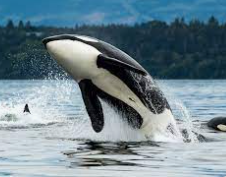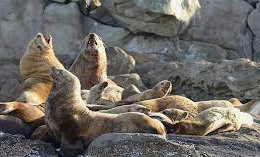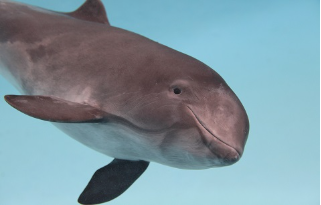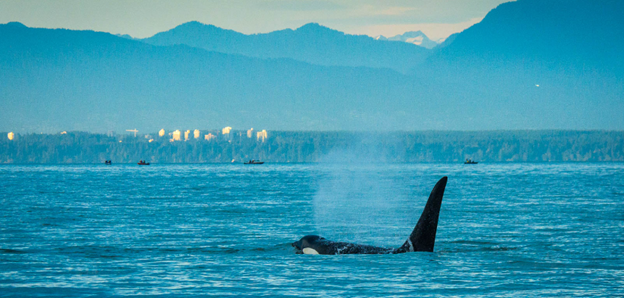This year, March 20th marks the first day of spring. Sometimes the weather can make it difficult to identify the true beginning of the season, so luckily there are some other signals boaters can look to that the warmer months have arrived. Marine animals, from seals to giant whales, can be great identification tools for spring. If you weren’t already excited for some warmer weather, here are 6 marine animals for spring boaters to see during this time of year, to get you in the mood for spring!


Orcas: Three ecotypes of orca can be observed off the coast of BC. Offshore killer whales do not enter coastal areas frequently and are unlikely to be seen. Thriving and growing populations of whales, such as Bigg’s orcas and humpbacks, are more visible and more likely to be encountered, starting in April. Sightings of large numbers of these orca peak in the spring then can drop of in frequency early summer, before a second peak late summer and into fall.
Humpback whales: Humpbacks can be found in the Salish Sea throughout late spring, summer, and fall. Over recent years the dramatic increase in humpback population in the Salish Sea means we can find humpbacks almost all year round, however the sighting frequency starts to increase around March as the humpbacks return in numbers to their feeding grounds.
Gray whales: The annual migration of the gray whales is one of the longest of all mammals, passing the Vancouver area from March to May on route to Alaska from Mexico and California. They can be very playful and curious, and often like to interact with boats, sometimes getting quite close! Many gray whales, however, don’t travel that far north at all and instead stay near the coastlines of Vancouver Island all summer long.
While you marvel at the gray whales’ annual migration, it’s essential to ensure that your boat is well-maintained and insured. Check out our article on How to Choose the Right Boat Insurance Policy for Boaters and Marine Businesses for guidelines on choosing the right coverage.
Sea lions: From December through April, sea lions converge on the east side of Vancouver Island to feed on herring that are returning to spawn. Encounters with these impressive and playful animals are most frequent in the spring and autumn around Vancouver.Sea lions have been hunted extensively in the past due to their perceived threat to the fishing and farming industries. They are now protected, but factors like pollution, climate change, and predation by Bigg’s killer whales remain threats to their recovery. This brings to light the importance of Boating Safety On The West Coast to help protect these species.



Porpoises: Harbour porpoises generally congregate in small groups, except in the spring when they feed on prey concentrated by strong, seasonal tides. Dall’s porpoises, their far more social cousins, are more likely to approach and interact with boats. Spring is also when you might spot newborn porpoise calves swimming with their mothers.
Harbour seals: The most common marine mammals in the B.C. coastal waters are seals. Although they can spend several weeks at sea, we often observe them hauled out on rocky shorelines where they can rest, sunbathe, and scan for predators. Pupping season is in spring and early summer, and starting in June, beaches all along the coast are transformed into harbour seal nurseries, as female seals come ashore to give birth, nurse and protect their young.
Seals spend several weeks at sea and rest on rocky shorelines where they can sunbathe and scan for predators. If you plan on boating during this season, make sure to review our Safety Tips For Winter Boating to avoid disturbing these animals in their natural habitats.
The Marine team at HUB is looking forward to this spring season as much as you are! If you happen to catch a photo of these marine animals, we’d love to see them – send us your photo at myboat@hubinternational.com.
As you prepare for the spring boating season, don’t forget to read our guide on [How To Winterize Your Boat – Checklist] to ensure your vessel is ready. Also, take a look at our HUB Marine’s Spring Boating Favourite to get the most out of your boating experience.
As we embrace the beauty of spring and its abundant marine life, it’s essential not to forget about the safety of our vessels on the water. Insuring your boat is an integral part of ensuring a secure and worry-free boating experience. Whether you own a sailboat, a yacht, or a houseboat, we have a comprehensive range of insurance options that will suit your needs. Discover more about Boat Insurance BC to protect your vessel from unexpected risks and enjoy the peace of mind that comes from knowing you’re covered. Embrace the new boating season with confidence!
Images courtesy of https://oceanecoventures.com/

